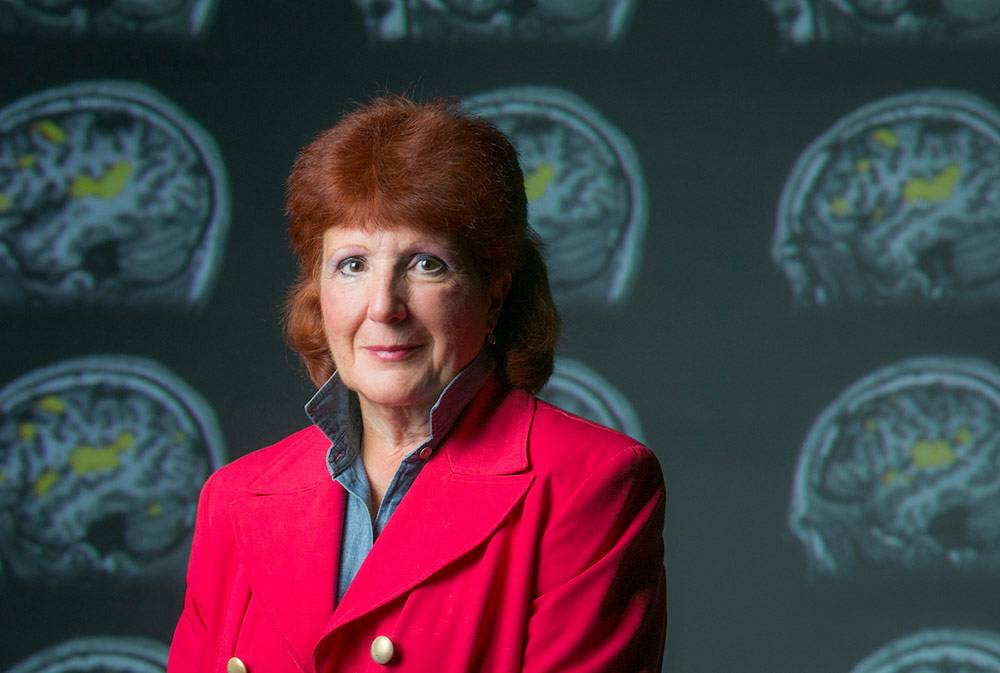
Edna Andrews is the Nancy & Jeffrey Marcus Professor of Slavic & Eurasian Studies, director of the Duke Linguistics Program, and author of “Neuroscience & Multilingualism” (Cambridge University Press, 2014). In the following interview, she discusses her research and intriguing questions in the study of the brain and language.
What is cognitive neurolinguistics?
Have you ever wondered how we learn languages and if it is possible to achieve native-like proficiency in a second or third language learned in adulthood? The field of cognitive neurolinguistics is a multidisciplinary field that seeks to understand how the brain acquires and processes languages in healthy persons and in pathology. One of the subfields of cognitive neurolinguistics focuses on bi- and multilingualism.
What drove you to pursue cognitive neurolinguistics?
My heritage and childhood played an important role in compelling me to become a cognitive scientist. As is true of many Greek diaspora children in the U.S., I attended Greek school as a child. I understood early in life that it was normal to be surrounded by different languages. I also was very lucky to be the daughter of a musician. I was playing my first instrument by the age of 4. The rich auditory environment of music and languages that enveloped me was both exciting and intriguing and set the stage for my future interests in cognitive neurolinguistics.
What kind of research do you do at Duke?
Sixteen years ago I began working with fMRI (functional magnetic resonance imaging) and our wonderful group of faculty in cognitive neuroscience and Duke’s Brain Imaging and Analysis Center (BIAC). Our research team at Duke was the first to publish a longitudinal fMRI study of second language acquisition and multilingualism. In our study, individuals were learning a new language together for a full calendar year (some longer) with two intensive in-country experiences totaling three months. We compared behavioral proficiency test data with imaging data by incorporating a multivariate analysis of covariance (MANCOVA).
As a result, we were able to analyze the degree to which fMRI can track language acquisition and derive empirically valid information about the achievements of the subjects in a range of measurements. In terms of understanding the relationship of brain and language, our results fit in with the important findings that proficiency is a more important factor than age of acquisition, and with higher proficiency there are more similarities in the mappings of one’s first and second (or third) languages.
What is the most exciting research experience you’ve had?
Research, like life itself, sometimes surprises you and presents unexpected opportunities. In my case it was the chance to interact with a famous memory disorder patient, Henry Gustav Molaison, known as H.M. He had surgery in 1953 to relieve his intractable epilepsy and it resulted in severe anterograde amnesia—the inability to make new memories after his surgery.
He became one of the most famous case studies of memory loss in the 20th century. Henry’s story had a profound impact on me as a scholar and human being, and our article that appeared in 2005 in the Journal of Memory and Language is still one of my favorite pieces. I never dreamed that I would become a small part of Henry’s story, and our time with him is one of the highlights of my life.
How does technology advance language research?
The last 20 years have been revolutionary for the study of brain and language. For example, there is now a clearer understanding of the bilateral nature of language mappings in the human brain. One of the most important forms of language mapping data comes from cortical stimulation mapping (CSM), a highly invasive, but direct neuronal measurement technique.
When these results are combined with the large body of language research with healthy subjects using hemodynamic and electrical techniques (including fMRI, PET, EEG, MEG), research focusing on brain and language can advance in exciting and profound ways.